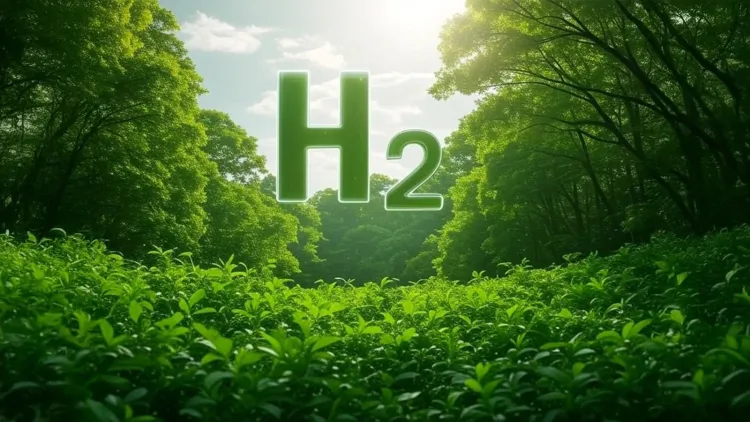Can Indian Scientists Revolutionize Green Hydrogen Production by Splitting Water Molecules?

Synopsis
Key Takeaways
- Innovative device for producing green hydrogen.
- Utilizes solar energy and natural materials.
- High efficiency and long-term stability demonstrated.
- Scalable production methods lead to potential large-scale implementation.
- Could significantly impact renewable energy systems globally.
New Delhi, June 21 (NationPress) A group of innovative Indian researchers from the Centre for Nano and Soft Matter Sciences (CeNS) in Bengaluru, which operates under the Department of Science and Technology (DST), has engineered a scalable next-generation device that generates green hydrogen through the process of splitting water molecules.
Green hydrogen is recognized as one of the cleanest fuels available, with the potential to decarbonize industries, power vehicles, and store renewable energy. Despite its advantages, methods for scalable and economically viable production have remained elusive until now.
The CeNS team has successfully produced green hydrogen utilizing only solar energy and materials abundant in nature, steering clear of fossil fuels and costly resources.
“By selecting intelligent materials and integrating them into a heterostructure, we have developed a device that enhances performance while being suitable for mass production,” stated Dr. Ashutosh K. Singh from CeNS, who spearheaded the project.
“This advancement brings us closer to achieving affordable, large-scale solar-to-hydrogen energy systems,” he further explained.
The study, published in the Journal of Materials Chemistry A, describes the design of an advanced silicon-based photoanode featuring a cutting-edge n-i-p heterojunction architecture. This structure consists of stacked n-type TiO2, intrinsic (undoped) Si, and p-type NiO semiconductor layers, which synergistically enhance charge separation and transport efficiency.
The materials were deposited through magnetron sputtering—a scalable and industry-ready method that guarantees precision and efficiency. This meticulous engineering approach resulted in improved light absorption, expedited charge transport, and minimized recombination loss, which are critical factors for effective solar-to-hydrogen conversion.
The device has not only achieved a remarkable surface photovoltage of 600 mV but also a low onset potential of approximately 0.11 VRHE, making it highly proficient at hydrogen generation under solar energy.
Even more impressively, it demonstrated outstanding long-term stability, functioning continuously for over 10 hours in alkaline conditions with merely a 4 percent drop in performance, which is a rare accomplishment in silicon-based photoelectrochemical systems.
This innovative device is appealing for several reasons, including high efficiency, minimal energy input, strong durability, and cost-effective materials, all integrated into a single solution, as stated by the researchers.
Additionally, it has shown successful performance at a large scale, with a 25 cm² photoanode yielding excellent results in solar water-splitting.
With further advancements, this technology has the potential to power hydrogen-based energy systems for applications ranging from households to industrial facilities, all harnessed by the sun, according to the research team.






